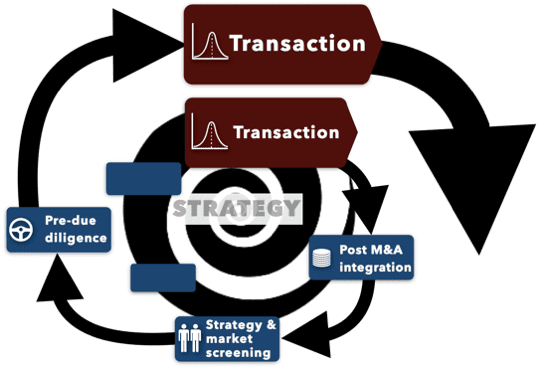Keeping M&A strategy flowing between high tides

In the mobility area, Mergers & Acquisitions (M&A) transactions often get the spotlight, especially as far as major trans-continental, trans-formational operations are concerned. It has also been largely commented that COVID-19 not only did not stop the trend, but also reinforced the deal flow, as companies have been realising the importance of engaging their transition and adapting their portfolio to incorporate further technologies, processes, and business approaches enabling increased resilience towards pandemics, shutdowns, conflicts, etc. through M&A strategy.
Over the last years, some transactions were particularly regarded as per their size and valuation levels, and in particular with ST Engineering acquisition of Transcore in the USA for $2.68 billion announced in 2021 and finalised in 2022, and also with Atlantia’s take-over of ex-Siemens mobility, Yunex Traffic, for €0.95 billion in 2022. The strategic aspect of both these take-overs is highly noticeable in the purchase price agreed, representing in both cases an EV/EBITDA multiple in a range as high as 17-19x, when traditionally peers transactions in the infrastructure software area were observed on a 11-13x range.
The sector is however noticeably under the influence of electric vehicle (EV) related high valuation multiples, affecting EV OEMs and their Tier-1 suppliers, but also the entire attached ecosystems, such as EV charging, EV-fleets management, etc. One of the main reasons for such hype is the strong support provided by governments in providing long-term visibility and subsidies for shifting towards decarbonised transportation, and enabling long-term business contracts for investing, maintaining and upgrading what will be the basis of tomorrow’s transportation.
Particularly in the mobility area where a lot of disruptions are to be considered in market approach (eg. transitioning towards electric vehicles), in business models (eg. importance of mobility as a service (MaaS)), or in technologies (eg. intelligent use of data), M&A transactions have become central to the evolution of organisations. However it is important to note that M&A does not stop on transactions which are the visible part of the iceberg but take an integral part of strategy processes and enrich them:

The transformational aspect of every single transaction is often under-evaluated, and, should ‘everything starts with at the strategy, everything stops at the strategy’ be often reminded to firms tempted to adapt their strategy every semester based on market conditions, it is however true that such transformations often generate new opportunities and enrich how strategy execution through M&A is being performed. The above linear process view should in fact, and based on our experience, be represented as a growing spiral with strategy at is centre.
So what are the success factors to turn the spiral into a positive, value-creation, virtuous M&A strategy circle?
PTOLEMUS’ experience in M&A is broad. Our team has been continuously involved on various stages of various size, various segment deals, from M&A strategy inception to the day-to-day management of post-mergers. Learning from experience shows that a few repetitive factors pop-up, and should be considered, especially within mobility-oriented companies such as:
- Think big. Always establish and update a living M&A target list. Dont’t forget any. Some dreams come true.
- Update, do not shuffle. Establish a regular strategy review process, including M&A targets updates.
- Evaluate carefully. Market scenarios often can be anticipated, except the unpredictable. Scenario-based value creation analysis helps setting appropriate valuation and deal structures.
- People come first. 1/3 of acquisitions still fail, and the most common root-cause for drama is that the most precious asset, people, is being wasted due to a lack of communication and alignment.
- Anticipate. Unlike is sounds, post-merger integration starts during the transaction… yes even before closing.
- Rhythm gives shape to the melody. Post-merger priorities, such as 100-days plan, have a critical impact that goes beyond simple reporting. Its results play a critical role in the future success.
The above consideration shows in fact that M&A transactions only are the visible part of what a sound and successful M&A strategy is about, as many actions take place between tides.
Interested in M&A advisory services? Find out more about our unique offering here.